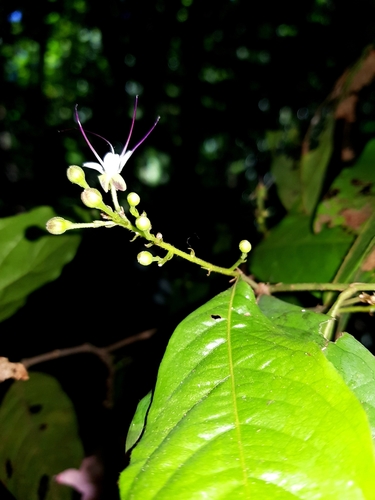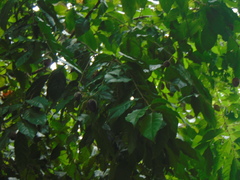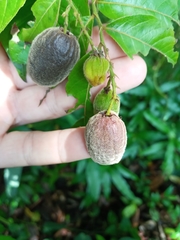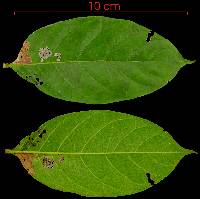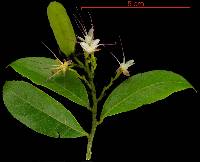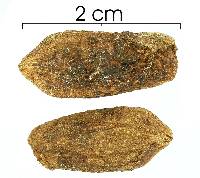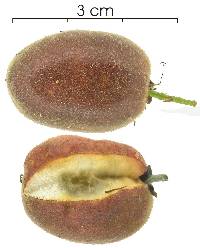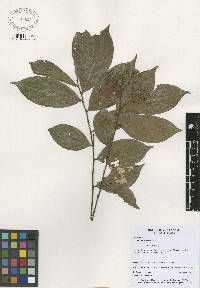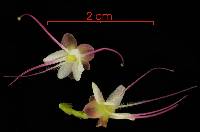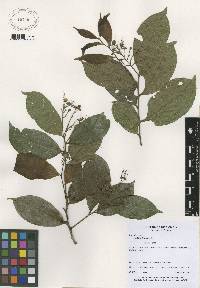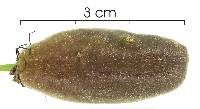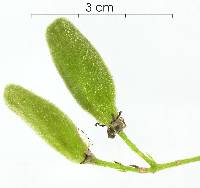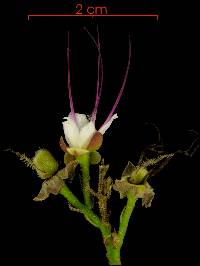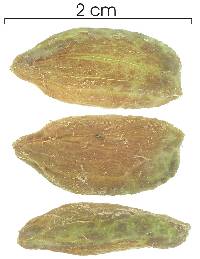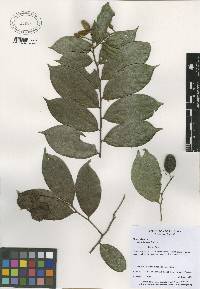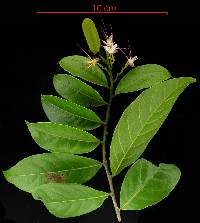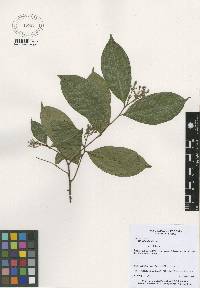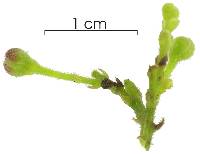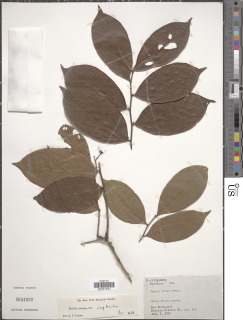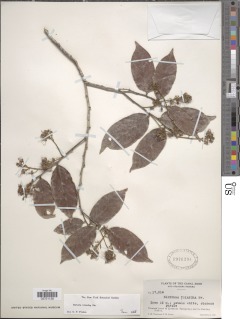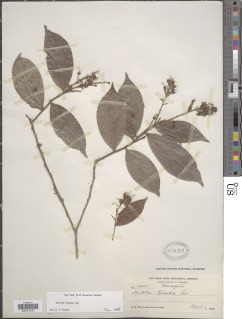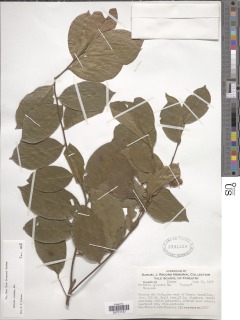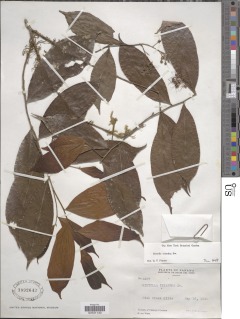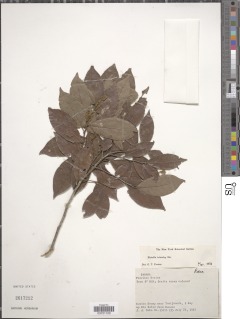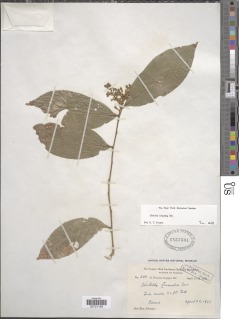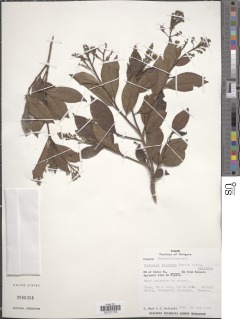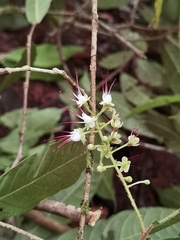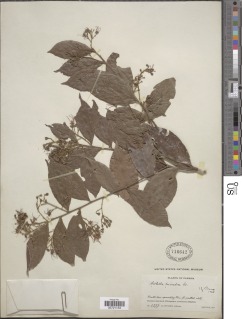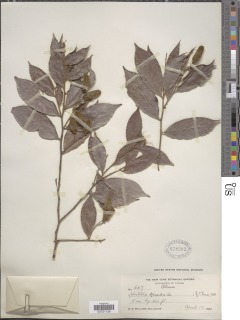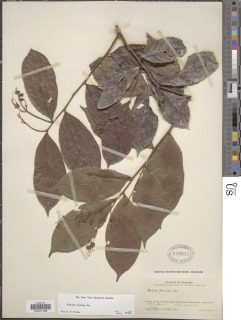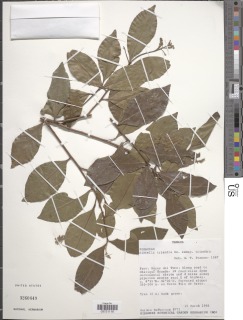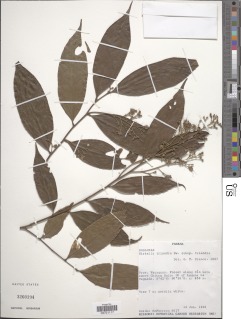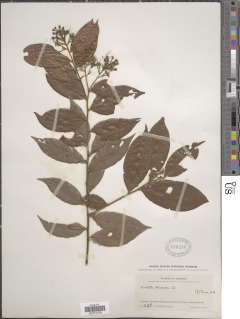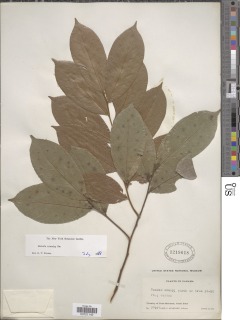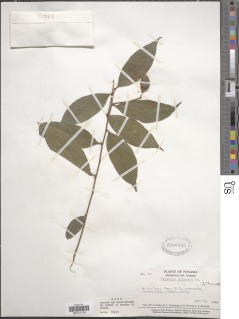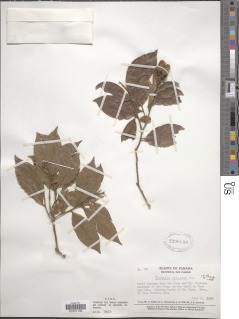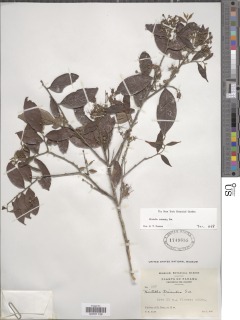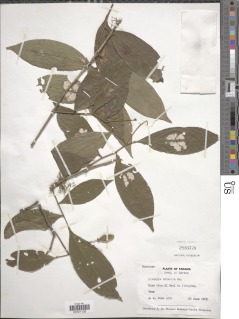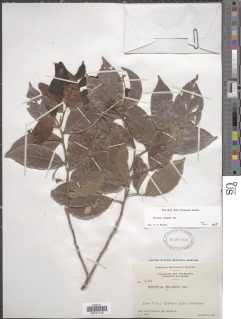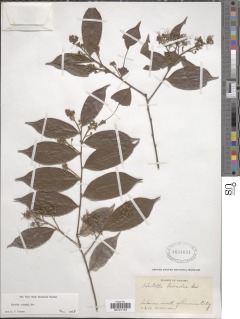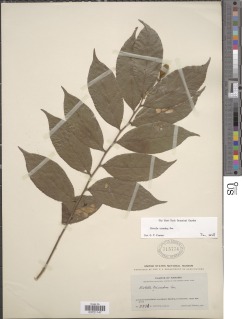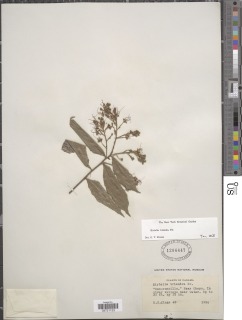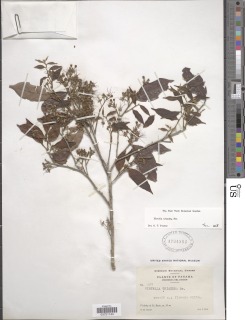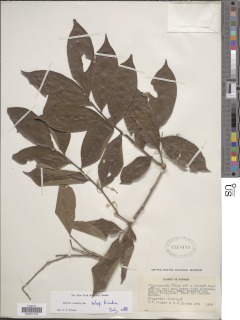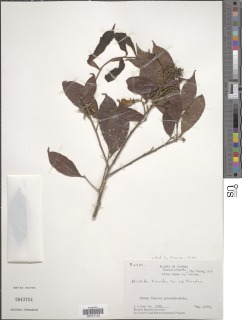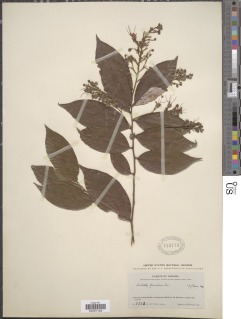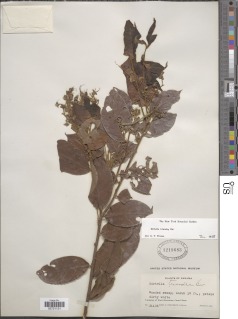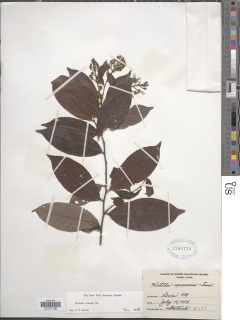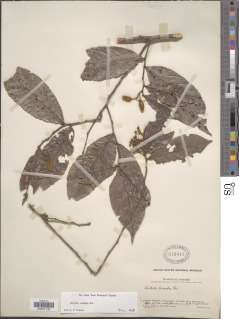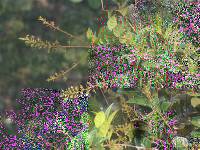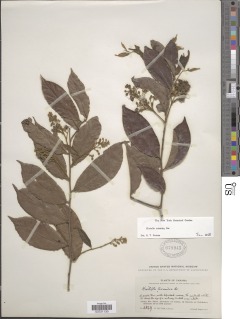

|
|
|
|
Family: Chrysobalanaceae
Pigeon-Berry, more... (es: camarón, camaroncillo, garrapato)
[Hirtella media Standl.] |
Description: A medium-sized tree with a straight trunk, usually cylindrically but sometimes slightly irregular. The inner bark (visible only by slashing the trunk) is brick red. Leaves are simple, alternate, regularly spaced along branches, in a flat plane, shiny green above. New leaves have black, circular spots. Stipules are thin and pointed, and they are paired, with two on opposite sides of the branch at the base of every leaf. Petioles are short and pubescent. Reproduction: Flowers are white or pink, produced singly or in small clusters at the ends of the branches from February to June. The fruit is a berry which turns black or purple when maturing from June to August. Distribution: Abundant at Barro Colorado and Soberania, where it is a dominant component of the mature and old-growth forest. Saplings are abundant whereever there are adults. Not seen from Gamboa south nor in wet forests of Santa Rita or the mountains. Not seen along roads or in open areas. Similar Species: This is a hard species, as the leaves alone lack distinctive features. The best mark is the pair of stipules at the base of each leaf, which are persistent and thus readily found. This is a genus character though, so related species must still be distinguished. The other Hirtella of the lowland Canal area are LK hirtam H. americana, LK2 which has dense hairs all over the leaves, and LK hirtra H. racemosa, LK2 which has smaller, less shiny leaves. Descripción: Árbol de 10 a 20 m de alto. Copa más o menos redondeada y con follaje denso. Tronco recto y cilíndrico, a veces irregular. Corteza exterior gris e internamente es roja. Hojas simples y alternas, de 4-12 x 2-5 cm, oblongas o elípticas, con ápice acuminado, bordes enteros y base redondeada o decurrente. Hojas nuevas con puntos negros por el envés. Estípulas pares y persistentes en los ápices de las ramitas. Pecíolo de 0.2-0.5 cm de largo. Flores blancas y con los filamentos de los estambres rosados o lilas. Frutos en drupas elipsoidales y sedosas, de 2-3 cm de largo, verdes, tornándose negros o morados al madurar. Datos Ecológicos: La especie crece a bajas y medianas elevaciones, en bosques húmedos o muy húmedos. En Panamá se encuentra en las provincias de Bocas del Toro, Chiriquí, Coclé, Colón, Darién, Panamá, Veraguas y la comarca de Guna Yala. Común y fácil de observar en los senderos de la isla de Barro Colorado. Florece y fructifica entre febrero y agosto. Las flores son visitadas por abejas, mariposas y otros insectos. Especies Parecidas: A menudo se confunde con LK hirtra Hirtella racemosa LK2, pero Hirtella racemosa es un arbusto o arbolito de menor tamaño. También se puede confundir con LK dichax Dichapetalum axillare LK2 , pero D. axillare es una especie rara que ocurre en bosques muy húmedos o nubosos. Usos: La madera es empleada para la construcción, carpintería, juguetes, pisos, postes de cercas y leña. Tree or shrub, to 20 m; trunk to 23 cm dbh; outer bark thin, fissured, weakly flaky; inner bark reddish-brown, granular; wood light brown, hard, heavy; youngest stems pubescent; sap inconspicuous. Petioles to 5 mm long, moderately pubescent; stipules paired, subulate, to 5 mm long, subpersistent; blades elliptic-oblong, acuminate at apex, acute to rounded or subcordate at base, 4-12 (14.5) cm long, 1.5-5 cm wide, glabrous above except on midrib, sparsely pubescent below, the trichomes denser on veins. Flowers in terminal racemose panicles to 8 cm long; rachis, branches, and pedicels tomentulose; pedicels slender, 2-3 mm long (appearing longer since flowers are often solitary at apices of branches); bracts and bracteoles narrowly lanceolate, 1-3.5 mm long, pubescent, lacking glands; calyx lobes 5, ovate, 3-4 mm long, rounded at apex, reflexed at anthesis, puberulent on both sides; petals 5, broadly elliptic, ca 5 mm long, rounded at both ends, white; stamens 3, long-exserted, arising from side of flower; filaments purplish above, l-2 cm long, fused into a low ring arising from rim of hypanthium (remnants of a 4th and a 5th stamen persisting as sharp lobes on this ring); style +/- equaling stamens and opposite them at anthesis, pilose and white below middle, purple above; ovary pilose-tomentose; stigma small, capitate. Drupes ovoid-oblong to rounded, ca 2.3 cm long, densely short-pubescent; exocarp thin, brownish-purple; mesocarp fleshy, sweet, tasty; seed +/- ovate, ca 1.7 cm long, with irregular longitudinal grooves, abruptly narrowed at base. Croat 7171, 10969. Common in the forest, mostly in the old forest. Flowers sporadically throughout the year, principally from November to May. Individuals flower more than once a year, possibly as many as three times. The fruits mature throughout the year; white-faced monkeys eat the fruits in June and July (Oppenheimer, 1968). Unusual growths were found on Croat 6010, which consisted of long-stipitate, obovate, greenish-white, fruitlike structures covered with short erect trichomes. The structures were regularly disposed on the stems and were at first believed to be fruits. Dr. Ghillean Prance (New York Botanical Garden), who made sections of the structures, has confirmed that they are not fruits. They are possibly due to gall insects. Bocas Species Database Characteristics: Shrub, Tree |
|
|
|

